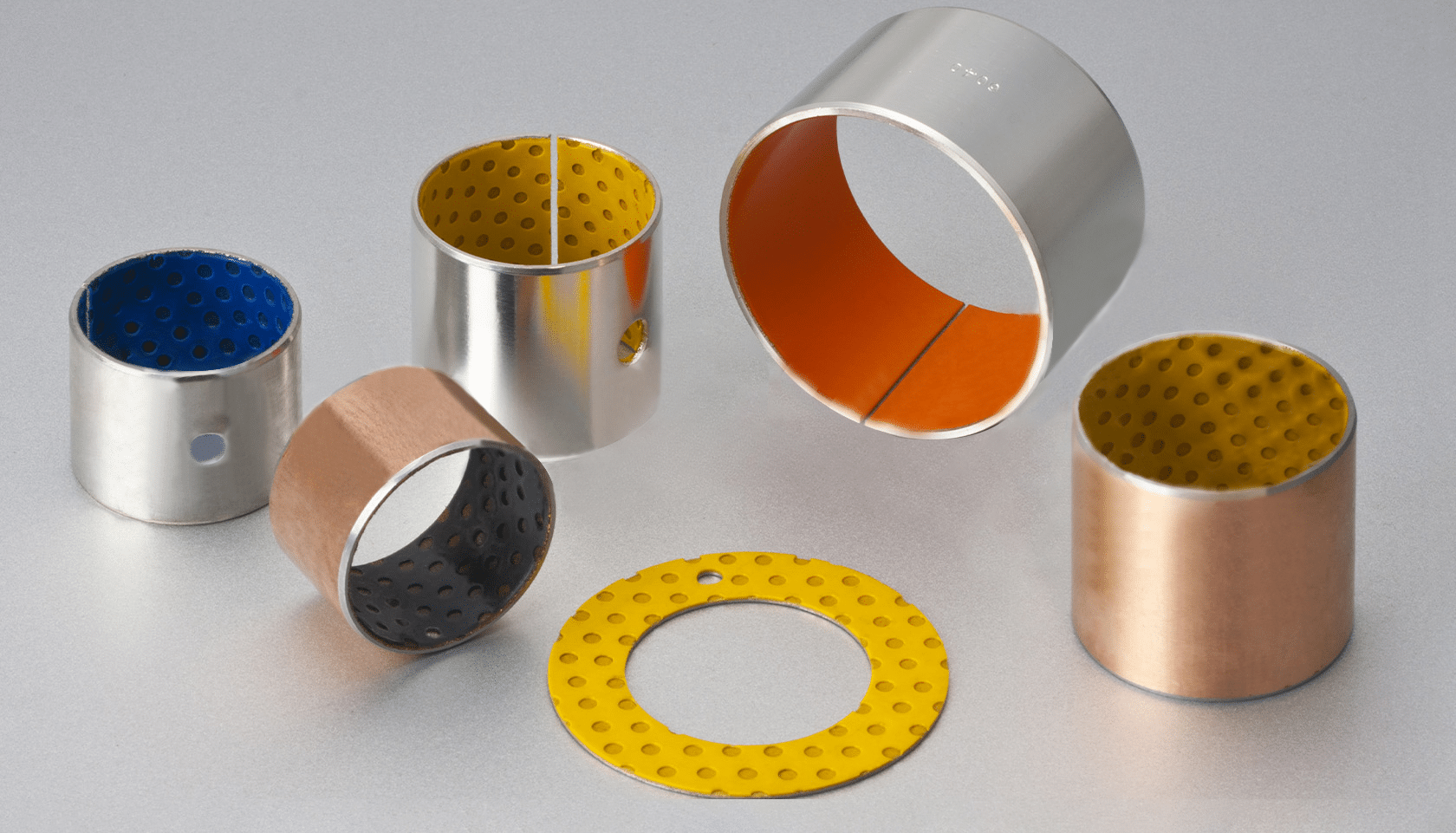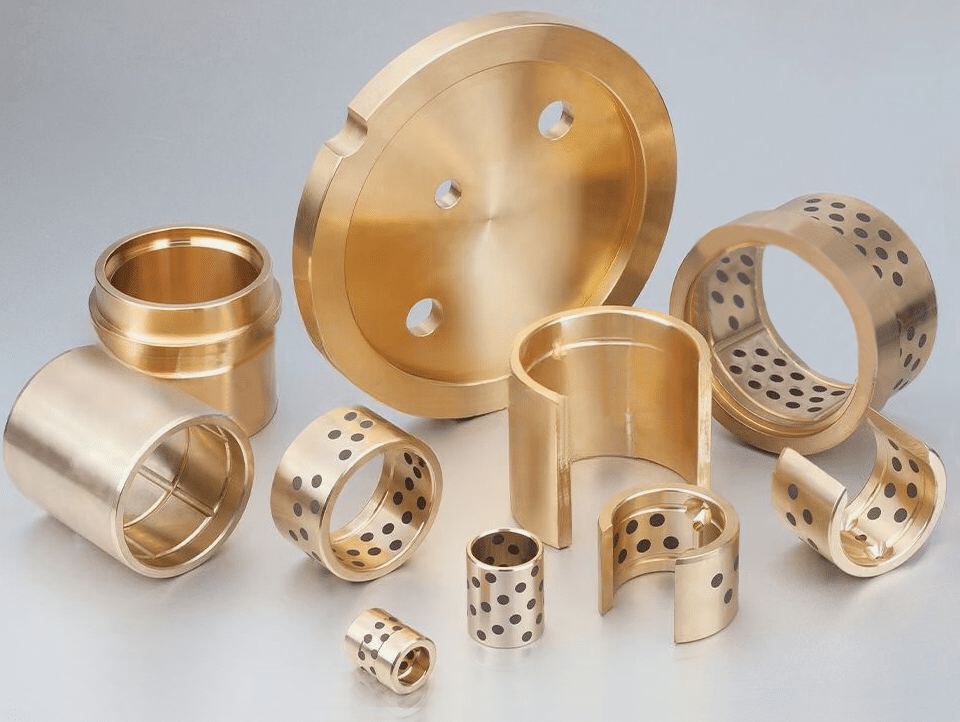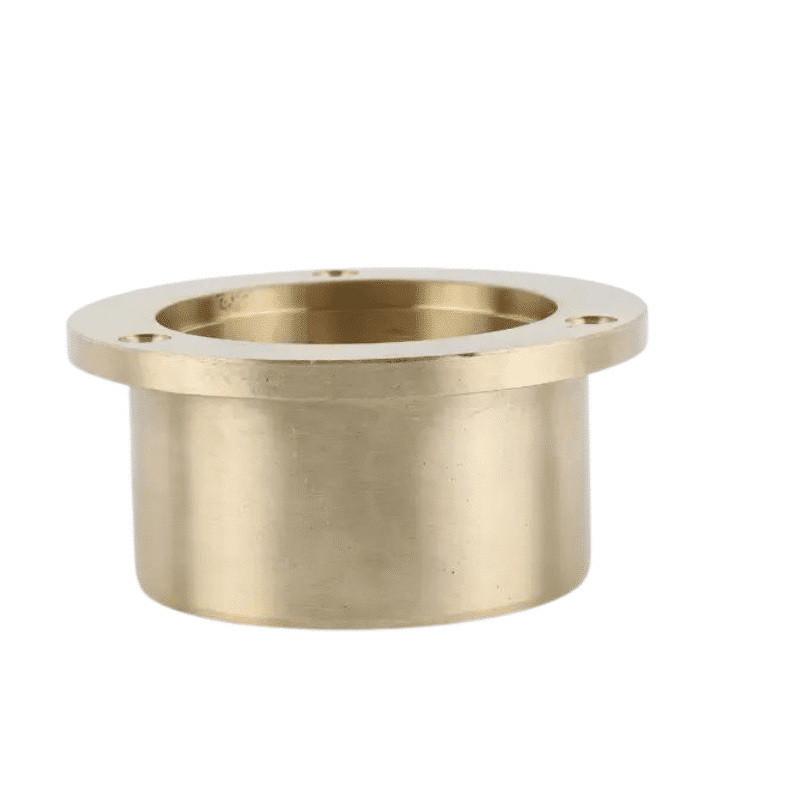Oversized Bearing Bronze Casting Methods
About us
Bronze Casting Methods, Casting & Products
The scope of our centrifugal casting process includes the production of bushes, rings, and sleeves using a wide range of copper alloys, compliant with both international and local casting standards such as DIN EN 1982:1998-12, PN-EN 1982, DIN 1705, 1709, 1714, PN 91/H-87026, ASTM B271, and BS 1400. Additionally, we utilize special alloys for our productions.
Our material offerings encompass a variety of copper-based alloys, including bronze, aluminum bronzes, leaded bronzes, special bronzes, brass, and other special alloys.
Casting Methods for Oversized Bronze Bearings
The selection of casting methods for oversized bronze bearings is influenced by several aspects of the desired final product, such as its size, shape, and the necessary physical and mechanical properties. The two most frequently used casting techniques for this purpose are centrifugal casting and sand casting.
Each casting method has its own unique advantages and application scenarios, choosing the right casting process depends on the complexity of the casting, size, material and production batch and other factors

Casting Methods
Oversized bronze bearing casting methods refer to the techniques used to produce large bronze bearings, which are components that operate by reducing friction between moving parts.
Continuous Casting method:
This is an efficient production method for large volumes of bronze bearings. It involves continuous pouring and solidification of the bronze to produce a continuous length of bearing material.
Continuous casting:
- Continuously pour molten metal into a mold.
- The metal solidifies in the mold to form continuous rods or slabs.
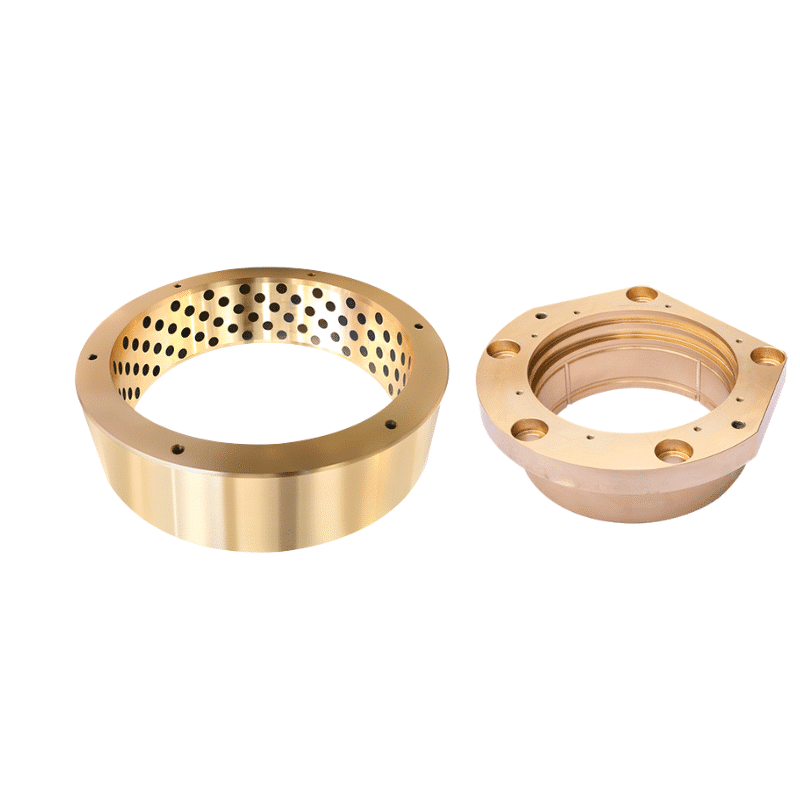
Centrifugal Casting Bronze
The centrifugal casting process guarantees the high casting quality. Material types: Aluminum Bronze, Tin Bronze, Leaded Bronze; Brass Alloy, Special Alloy.
Applications of Centrifugal Casting Products: Bearings, sliding bearings, half bearings, bushes, worm gears, sealing rings, gears, shafts, screw nuts, rings, sleeves, and plain bearings. These components are utilized in various industries including power generation, oil and gas, marine, fluid control, engineering, aerospace, and mining. Additionally, they are used in wind turbines.
Centrifugal Casting Method:
- Prepare a rotating mold.
- Pour molten metal into the rotating mold.
- Use high-speed rotation to ensure the metal fills evenly and forms the casting.
- Stop the rotation and allow the metal to solidify.
- After cooling, open the mold and remove the casting.
Sand casting method:
Sand Casting Process
Sand casting involves creating a pattern that matches the desired shape of the final part. This pattern is placed inside a container known as a flask, which is then filled with sand. A binding agent is mixed with the sand to ensure it hardens properly. After the mold has cured, the pattern is removed, leaving behind a hollow cavity in the shape of the part. Molten bronze is poured into this cavity to form the casting. Once the metal has cooled and solidified, the sand mold is broken away to reveal the cast part. The resulting sand casting can either be sold as is or undergo additional finishing processes to enhance its quality and appearance.
- Prepare the molding sand and create the mold, including the cope (upper part) and drag (lower part).
- Make a sand core to form the internal cavities of the casting.
- Close the mold, which involves combining and securing the cope and drag.
- Pour molten metal into the sand mold.
- Cool the mold, allowing the metal to solidify.
- Shake out the casting by removing it from the mold after cooling.
- Clean the casting by removing excess sand and burrs.
- Inspect and perform post-processing, including heat treatment and quality checks.
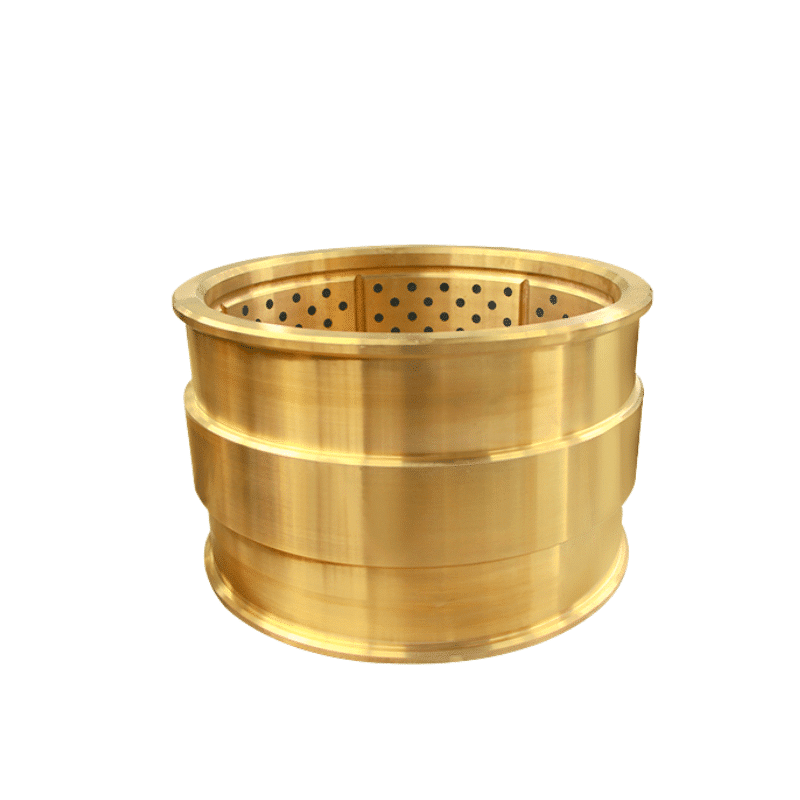
Providing Brass, Bronze, and Specialty Copper Alloys, Copper Alloy Machining Services
Oversized Bearing Bronze Casting Methods, bronze by design
Casting Standards: PN-EN 1982, DIN 1705, 1709, 1714, PN 91/H-87026, ASTM B271, BS 1400
Oversized bronze bearing casting methods refer to the techniques used to produce large bronze bearings, which are components that operate by reducing friction between moving parts. Here are some common casting methods suitable for oversized bronze bearings:
- Centrifugal Casting: This method is particularly suitable for large diameter bronze bearings. It uses centrifugal force to fill the mold and solidify the metal, which can produce bearings with a uniform and dense structure.
- Sand Casting: It’s a versatile and widely used method that can accommodate a variety of sizes and shapes. However, it may not provide the precision needed for some mechanical parts.
- Metal Mold Casting: This process uses a metal mold to increase the cooling rate of the molten bronze, which can lead to a denser crystalline structure in the bearing.
- Die Casting: This high-pressure casting method is used to produce precision bearings. The molten bronze is forced into the mold under high pressure, which can result in a very fine finish and close tolerances.
- Continuous Casting: This is an efficient production method for large volumes of bronze bearings. It involves continuous pouring and solidification of the bronze to produce a continuous length of bearing material.
- Investment Casting (Lost Wax): This method involves creating a wax pattern of the bearing, which is then coated with a ceramic material and heated to create a mold. Molten bronze is poured into this mold, and the ceramic shell is removed after solidification.
- Squeeze Casting: Also known as liquid metal forging, this combines casting with forging to produce a bearing with improved mechanical properties.
- Vacuum Suction Casting: This method is used for precision castings where a vacuum is applied to help the molten bronze fill the mold more accurately.
Each method has its advantages and is chosen based on factors such as the size and complexity of the bearing, the required tolerances and surface finish, and the volume of production. Centrifugal casting is often preferred for oversized bearings due to its ability to produce large, uniform parts with fewer defects.
Gravity casting, also known as permanent mold casting, is a metal casting process that relies on the force of gravity to fill a mold with molten metal. This technique is used to create precise and complex parts with high-quality finishes. Here’s a detailed overview of the gravity casting process and its characteristics:
- Preparation of the Mold: The first step involves preparing the mold, which is typically made from metal, and preheating it to a specific temperature. This step ensures uniform solidification and prevents cold spots within the casting. A release agent or coating is also applied to the die cavity to facilitate easy part removal and protect the die from erosion.
- Pouring Molten Metal: Molten metal, which has been heated to a precise temperature, is poured into the preheated mold. The pouring process is carefully controlled to minimize turbulence and ensure the metal fills the mold with minimal defects.
- Solidification: After pouring, the molten metal cools and solidifies within the mold. The solidification time varies depending on the metal used and the complexity of the casting.
- Removing the Casting: Once the metal has solidified, the mold is opened, and the newly formed casting is removed. The use of a release agent ensures that the part can be removed without damaging the mold surface.
- Post-Processing: The casting may then undergo further processing, such as machining, to achieve the desired dimensions, surface finish, or to add features. This step allows for the customization and refinement of the casting to meet specific application needs.
Gravity casting is compatible with various metals, including aluminum alloys, magnesium, cast iron, copper alloys, and zinc. The process is particularly effective for metals like aluminum due to its lower melting point and the ability to achieve good surface finishes and dimensional accuracy.
The advantages of gravity casting include superior quality and precision, cost-effectiveness, and efficiency. It is suitable for both short and large production runs and is widely used across industries such as automotive, aerospace, electronics, and consumer goods for producing components with moderate dimensional accuracy and consistent quality.
However, the process does have limitations. It requires a moderate to high investment in tooling and equipment and is primarily used for casting non-ferrous metals. Additionally, the molten metal may not flow properly into thinner sections in time to cool, necessitating the use of pressure casting for certain applications.
Gravity casting is an effective mass-production tool for creating metal components with moderate dimensional accuracy, consistent quality, and relatively short cycle times. It is particularly suitable for producing medium to large quantities of parts.
Alternatives to gravity die casting include low-pressure die casting, high-pressure die casting, investment casting, and squeeze casting, each offering unique advantages and disadvantages based on the specific requirements of the project.
Continuous Casting for Bronze Bushings:
- Material Selection: Choose the appropriate bronze alloy based on the bushing’s intended application. Leaded bronze or aluminum bronze might be selected for their enhanced wear resistance and corrosion properties.
- Molten Metal Preparation: The chosen bronze alloy is melted in a furnace at the correct temperature to ensure it has the right viscosity for casting.
- Tundish and Ladle: The molten metal is transferred to a tundish, a reservoir that allows for the distribution of metal into the continuous casting machine.
- Casting Machine: The molten metal is poured into a water-cooled, vertical, and open-ended mold. The mold is designed to match the cross-sectional shape of the desired bushing.
- Solidification and Withdrawal: As the bronze cools and begins to solidify against the mold walls, the solidified metal is continuously withdrawn from the bottom of the mold. The rate of withdrawal is carefully controlled to match the solidification rate.
- Secondary Cooling: After leaving the mold, the bronze billet passes through a secondary cooling zone where it is further cooled, solidifying completely.
- Sizing and Cutting: Once fully solidified, the bronze billet is cut to the required length for further processing into bushings.
- Finishing: The cut billets are then further machined to achieve the precise dimensions and tolerances required for the bushings. This may include turning, drilling, or grinding.
- Quality Control: Throughout the process, the bronze bushings are tested for quality, including visual inspection, dimensional checks, and non-destructive testing to ensure they meet the required specifications.
- Customization: Depending on the specific application, the bushings may be customized further through heat treatment, surface treatments, or by incorporating features such as oil grooves or flanges.
The classification of bronze based on different casting methods is a vital topic in both metallurgy and manufacturing. In this post, we’ll delve deeper into centrifugal cast bronze, as well as touch upon the continuous casting process.
Continuous Cast Bronze: This technique involves the pouring of molten bronze into a machine designed for continuous casting. As the bronze solidifies, it forms a continuous billet or slab that can be cut into desired lengths. This method is prized for its high production speed and the ability to consistently produce material with uniform cross-sections over extended lengths.
Centrifugal Cast Bronze: Centrifugal casting can be categorized further based on the mold material utilized, which significantly influences the characteristics of the final product.
- Sand-Centrifugal Cast Bronze: In this approach, molten bronze is poured into a sand mold pre-shaped to the required specifications. The mold is then rapidly spun using a centrifuge. The centrifugal force compacts the sand and ensures the bronze fills the mold evenly, adhering closely to its complex contours. This method is particularly useful for intricate designs that are challenging to replicate with other casting techniques.
- Metal-Centrifugal Cast Bronze: Alternatively, molten bronze may be cast into a metal mold, which is also subjected to high-speed rotation. The use of a metal mold facilitates a smoother surface finish and more precise dimensional tolerances than sand molds. This method is preferred for mass production of detailed components.
Both sand-cast and metal-cast centrifugal methods enhance the casting process by:
- Minimizing porosity and enhancing the density of the cast, which results in a stronger final product.
- Promoting a more even distribution of the molten metal within the mold, ensuring consistent quality.
- Helping to remove impurities and gases from the molten bronze, reducing defects in the finished pieces.
Centrifugal casting is particularly suitable for bronze due to its excellent flow characteristics when melted, allowing it to fully capture the details of the mold under the influence of centrifugal forces. Furthermore, bronze’s relatively low melting point means it can be cast with less energy and at lower temperatures, offering cost savings and reducing environmental impact.


